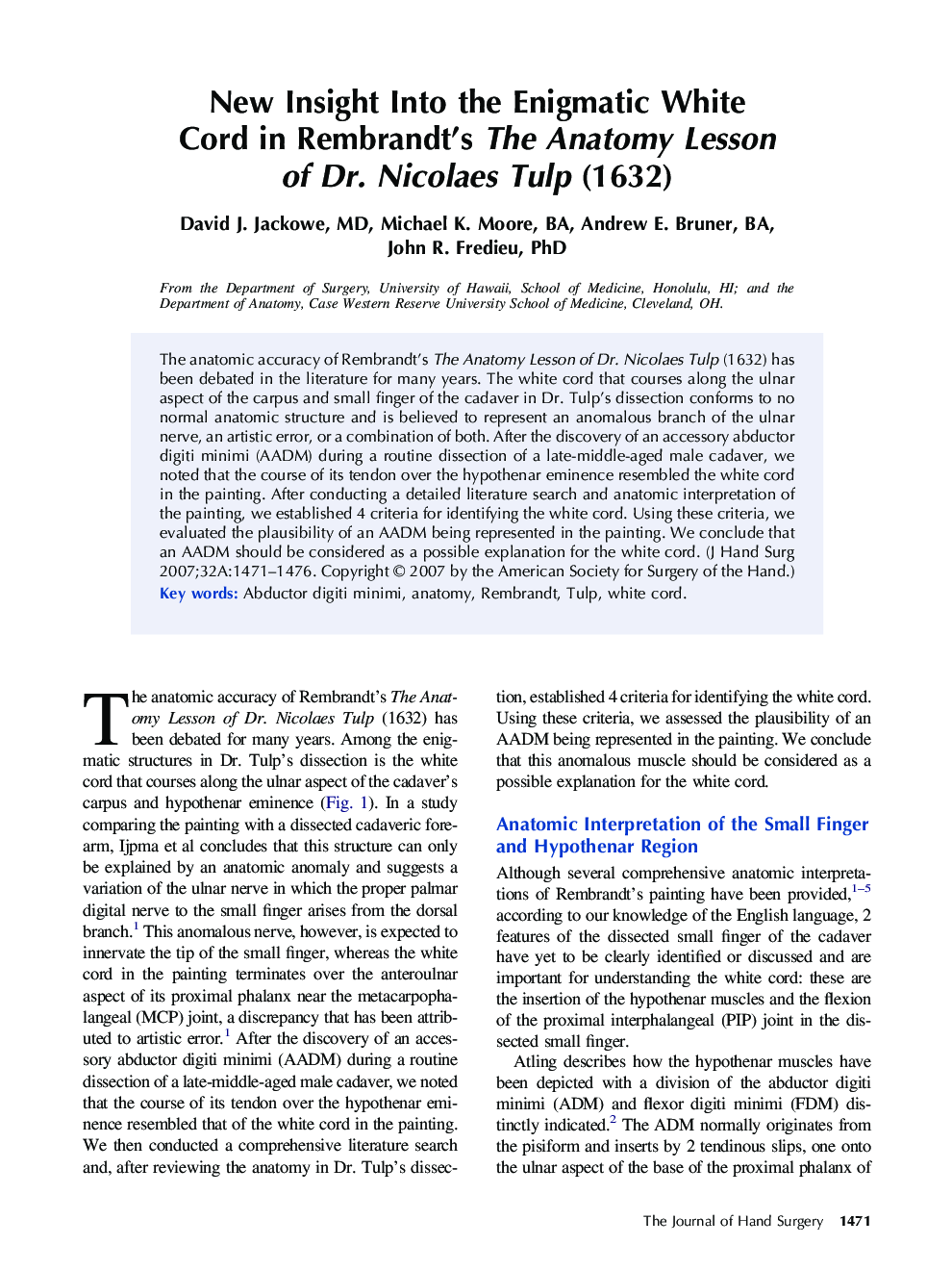| Article ID | Journal | Published Year | Pages | File Type |
|---|---|---|---|---|
| 4071046 | The Journal of Hand Surgery | 2007 | 6 Pages |
The anatomic accuracy of Rembrandt’s The Anatomy Lesson of Dr. Nicolaes Tulp (1632) has been debated in the literature for many years. The white cord that courses along the ulnar aspect of the carpus and small finger of the cadaver in Dr. Tulp’s dissection conforms to no normal anatomic structure and is believed to represent an anomalous branch of the ulnar nerve, an artistic error, or a combination of both. After the discovery of an accessory abductor digiti minimi (AADM) during a routine dissection of a late-middle-aged male cadaver, we noted that the course of its tendon over the hypothenar eminence resembled the white cord in the painting. After conducting a detailed literature search and anatomic interpretation of the painting, we established 4 criteria for identifying the white cord. Using these criteria, we evaluated the plausibility of an AADM being represented in the painting. We conclude that an AADM should be considered as a possible explanation for the white cord.
